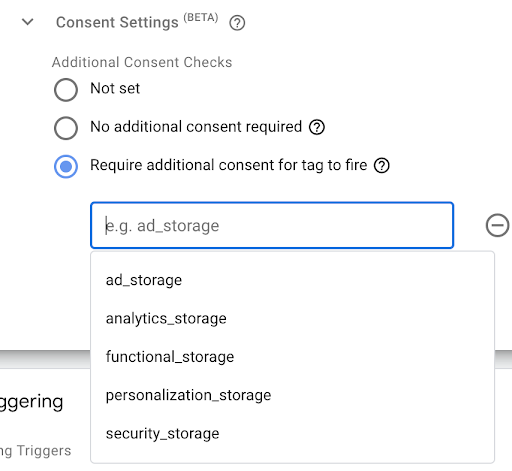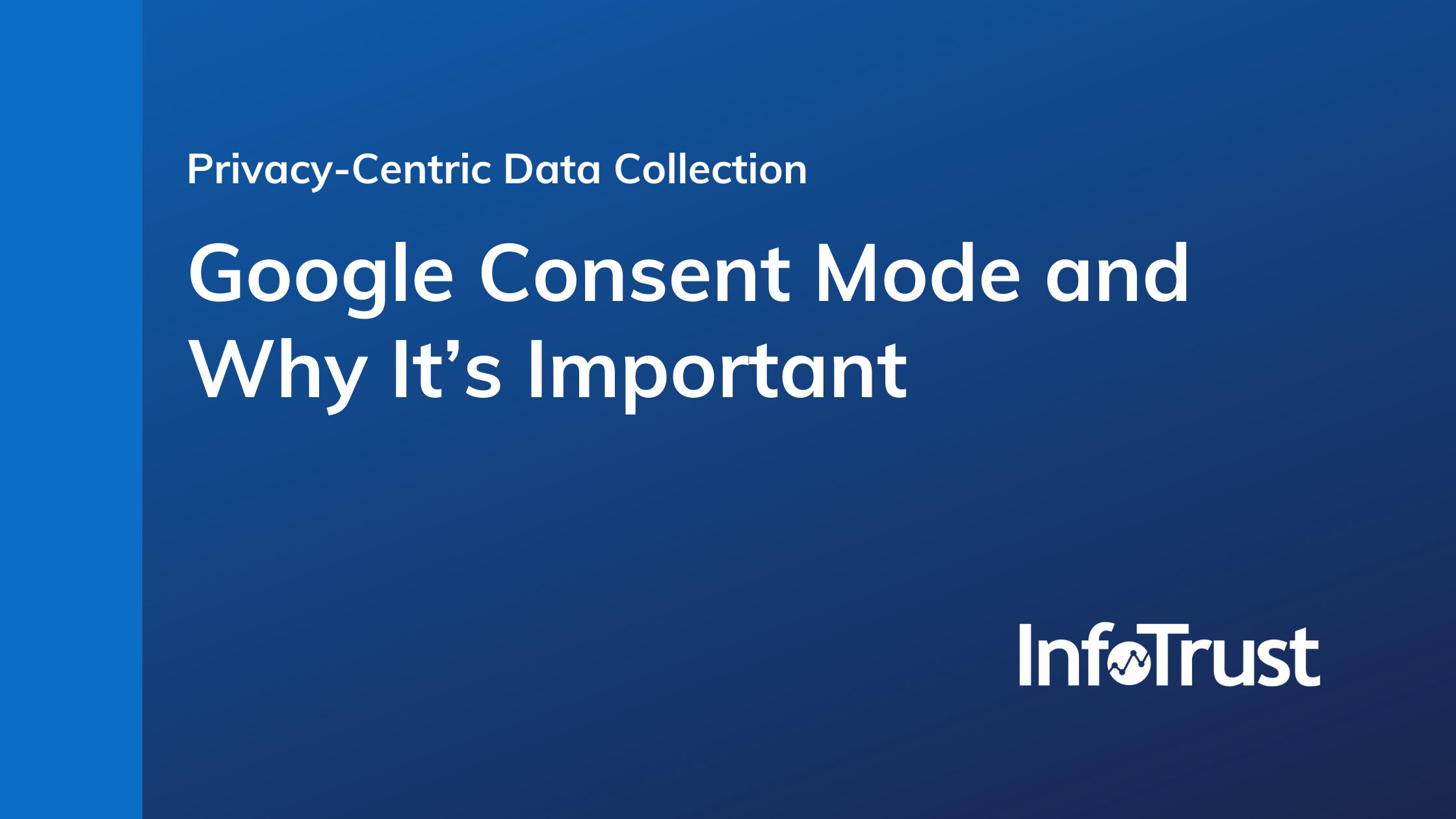First-party data collection is a huge topic of conversation right now. With all the privacy changes that are happening in the industry—both regulatory as well as technical—organizations are finally realizing that they can not rely on third-party data sources to drive their data strategy. A major challenge to collect the first-party data necessary to fuel an organization’s data-driven decision making is the gap in observation due to non-consenting users. Google’s new Consent Mode is a tactical method that can be used to address some of those different concerns and compliantly collect complete interaction data from digital properties.
Google’s Consent Mode allows for the collection of pure interaction data—think conversion events, product views, page loads, interaction events—without the placement nor accessing of any cookies. Further, no unique identifiers are collected which can be associated with the user. As a result, this anonymous interaction data is able to be compliantly collected to use in analytics for all users regardless of their consent state.
We’ll now explore the three primary benefits that can be realized with Consent Mode and why it should be at the top of the roadmap for your privacy-centric marketing transformation.
[Note: Consent Mode should be a requirement for any tag management architecture in a market with explicit consent requirements (i.e. Europe). For regions with opt-out requirements (i.e. some states in the United States) there are other configurations which can comply with the legal requirements and provide more analytics insight. Curious about these? Let’s chat.]
1. Full visibility to conversions and user interactions
Specifically for organizations with a presence in Europe, once an explicit consent mechanism has been implemented to comply with ePrivacy laws, many organizations saw a 50-70% reduction in observed traffic. More important than the general gap in traffic reporting, any conversions which happen in these unobserved sessions are also not tracked. Without this conversion data, organizations have no way of reporting on which products are most popular, ecommerce transaction counts and revenues, nor the number of registrations happening. These are all important reporting needs from web analytics, rendered completely ineffective due to the consent situation.
Consent Mode addresses this by modifying the behavior of the tags to compliantly collect this core interaction data without the use of cookies or any user identifier. A full picture of things like pure event counts, conversion count, and content views are recovered in reporting. From a business perspective, for any organization operating in a market with explicit consent (opt-in) requirements, Consent Mode is an absolute necessity to receive any value from web analytics.
2. Foundation for advanced modeling
While the ability to collect anonymous interaction data for all users directly fills in gaps in event and conversion reporting, the collection of these events also enables the modeling of metrics like conversion rates, user counts, and session counts.
Consent Mode allows for the collection of data from users across two different consent states:
- Anonymous users – Those who do not consent, no cookies nor identifiers are collected. Only anonymous interaction events are collected.
- Consenting users – Those who consent, cookies are set and a unique anonymous identifier is collected. For these users you are able to collect interaction events and tie them together for session counts, user counts, and correlate conversions with traffic sources and interactions.
Leveraging data collected in the anonymous context, it is possible to understand the proportion of events which occur in the consented context as well as a general understanding for the number of unique sessions occurring. With these calculated metrics, we can then layer in insights from the consenting user cohort and model metrics like overall session counts, overall user counts, and conversion rates. Further, advanced modeling for user pathing analysis can also be accomplished. None of this is possible without the full collection of interactions made possible via Consent Mode.
3. Operational efficiencies
For organizations managing their tagging via Google Tag Manager (GTM), new functionality has been added which greatly simplifies the management of consent while also decreasing compliance risk. Traditionally, consent has been managed by adding exclusions to tag triggers or firing rules. The conditions for consent have thus been configured at the trigger level and then later associated with tags. While this configuration works, it can result in a very complicated and heavy GTM architecture.
To further support Consent Mode, GTM has moved the consent settings from triggers to tags. This allows for the assignment of the consent condition under which the tag should execute to live directly in the tag in question.

Instead of applying a trigger with a consent condition exclusion, you can assign a trigger with no consent condition applied and manage consent directly within the tag. Further, a new consent view has been added to view the consent conditions applied and to modify consent conditions applied in bulk:

Both of these features are made possible via Consent Mode, greatly simplifying the management of tags. This simplification leads to many operational efficiencies and a reduction in compliance risk associated with poor configuration of tags for consent.
Effective use of first-party data to understand campaign effectiveness, how users interact with digital properties, and conversion metrics are base requirements for data-driven decision making. In the current regulatory environment, compliantly collecting this data is more difficult than ever. Consent Mode provides a solution to collect the data necessary to glean these insights while fully respecting the consent choices of users. Without it, web analytics data is worthless in a market requiring explicit consent.
Still want to know more about Google Consent Mode? We’ve got an in-depth resource here, as well as a recorded webinar to help.



